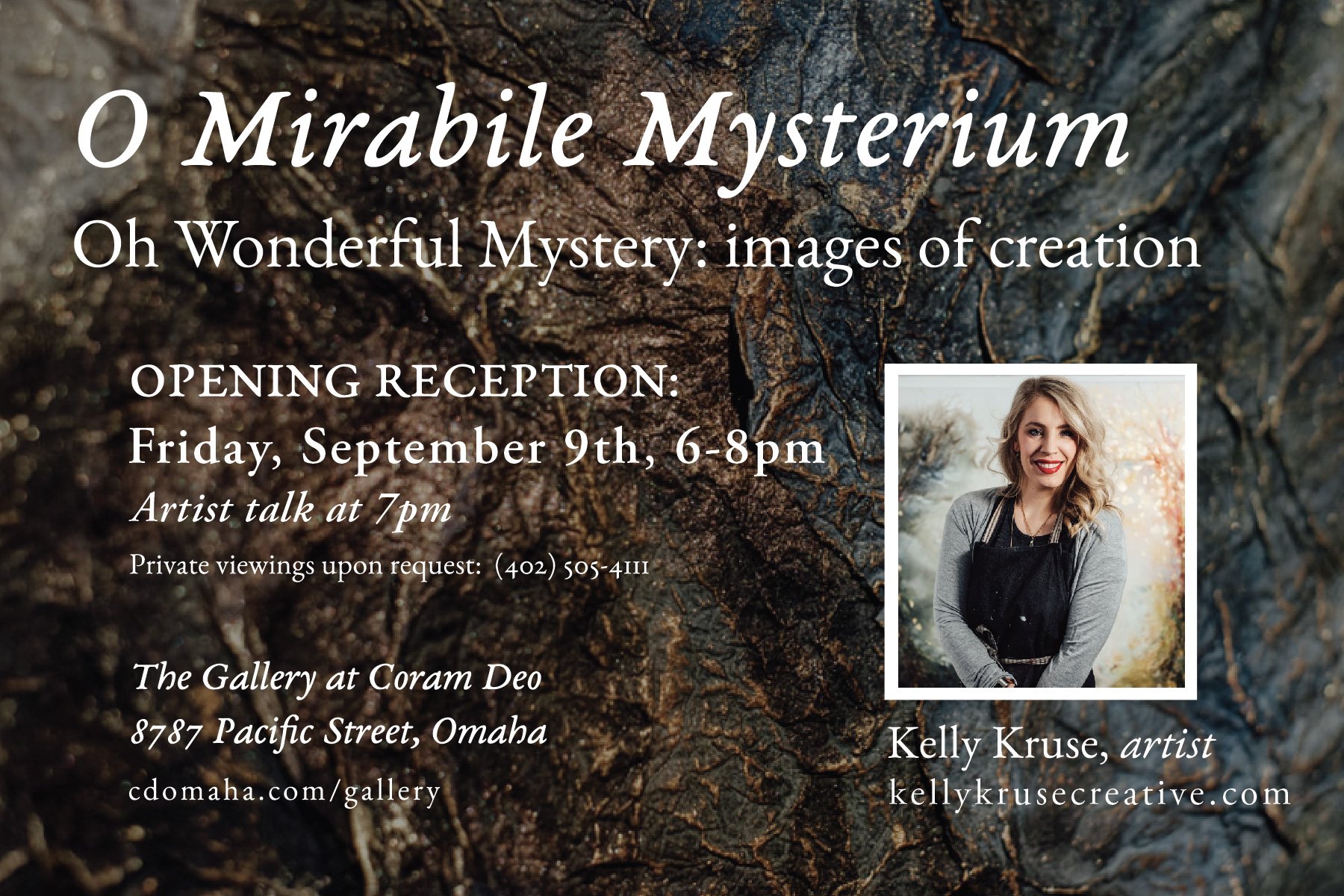Kelly is a multidisciplinary artist and curator whose practice encompasses visual art, writing, and the performing arts. She creates work that illuminates the beauty and complexity of scripture, theology, and the human experience. Her artwork has been exhibited across the United States and is featured in collections around the world. She is curator of the Four Chapter Gallery. In addition to her work in the visual arts, Kelly holds a masters degree in vocal performance with an emphasis in opera studies from Indiana University. She has over twelve years of classical teaching experience and is still an active voice teacher in Kansas City.
I didn’t make this project to represent how I believe the actual beginning of the universe may have looked—I don’t have knowledge or wisdom to show you such a thing. However, the authors of the Hebrew Bible spent a lot of time thinking about origin, meaning, and identity as they crafted scripture in partnership with God, and through their wisdom I can dare to contemplate the beginning.
The more I study these accounts, the more I realize I have to learn. There are many questions I still have about the material origins of life. The longer I wrestle with scripture, the less I believe the creation accounts in the Bible were made to answer such questions. However, I am certain about something: contemplating creation reveals manifold riches, including insights about the heart of God and the position of human beings in his Kingdom, which encompasses all of creation.
Throughout scripture, creation accounts play many roles. Genesis One creates a sense of context at the beginning of the Hebrew scriptures—it brings forth an account of the beginning that is remembered and recapitulated at the beginning of practically any individual or cultural activity in the scriptures that follow. The act of contemplating creation results in wonder and awe throughout the Psalms (Ps. 8, 46, 104, to name a few). It brings hope to the exiles (Isaiah 40-55) and inspiration to those rebuilding at the end of such an exile. God’s answer to the righteous sufferer Job (chs. 38-41) is to parade a panorama of creation before him. The account of the birth of wisdom in the book of Proverbs (ch. 8:22-31) uses familiar imagery from creation. And in the book of Ecclesiastes, often seen as one of the darkest books of the Bible, we see an endless circle of birth and death—re-creation—featured very prominently in the opening and closing chapters of the book.
My hope for this project is to create space for you to encounter the metaphysical imagery of creation in scripture, and for it to take center stage over the physical imagery, even though material creation is ever-present and deeply important. I have come to be convinced by my study of the text that any tensions between science and faith in creation are merely perceived. In other words, when creation is handled in the scriptures, it is not intended to function as a scientific cosmology—that is, to be an account of the biological-material unfolding of the universe. To try to ask it to function as one demands answers from the text it wasn’t intended to provide. This doesn’t mean science is irrelevant–on the contrary, it is deeply relevant, being part of our cosmological understanding of the universe. There are a lot of brilliant scholars doing work to reveal that science and faith are not diametrically opposed.
For me, contemplation of creation is circular. I’m always returning to it, and there is always more to see. It is hard to remember when I started to wonder about it, and it is impossible to know the end of the enterprise. I’m always looking backward—where did I come from?—and then forward—where am I going? Wherever it is, I pray that I will find myself inside the boundary God has drawn, under the shelter of his wings.

